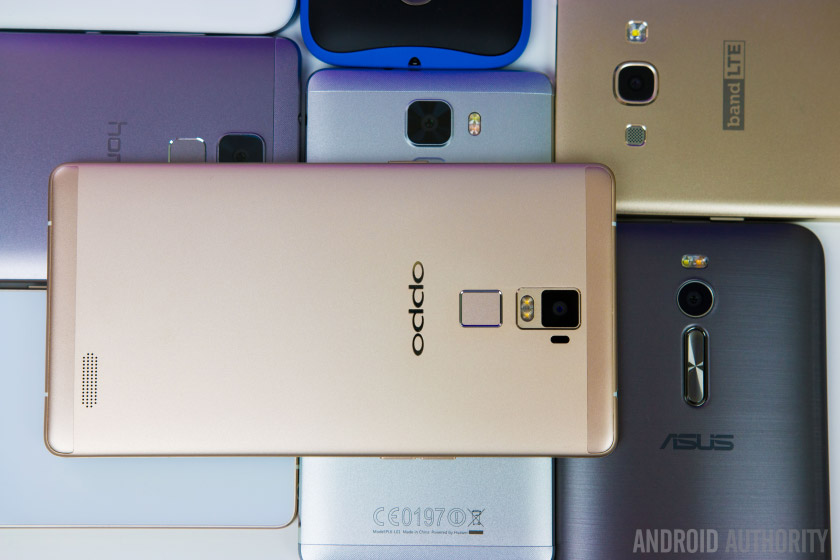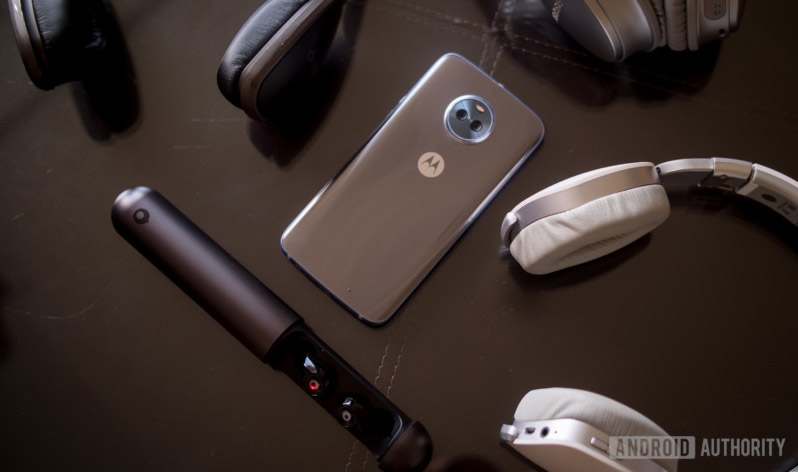Based on materials from android-softwares.com
It all started with Samsung and its Note 8. LG was not long in coming with its V30. Of course, with the advent of iPhone X Apple took history to the next level, and now it seems that Google is joining the race with the new Pixel. Welcome to the era of ultra-flagships.
Premium or Ultra Premium?

Just six months ago, we thought flagships were already premium devices. “The coolest device”, “there is nowhere cooler”, and so on. But it seems we were wrong. Apple, Samsung and LG unanimously chose the strategy of two flagships: one flagship for mere mortals and the second, an even more premium device for enthusiasts or simply for those who can afford such pleasure.
As long as the smartphone market has been around, so many people have been talking about price hikes for flagships, but in 2017, ultra-premium flagships seem to be the new trend.
It's not just a much larger jump in prices compared to previous years – the price of these devices grew from $ 600 to $ 800 and then to the current value of about $ 1000. Now, smartphone manufacturers also seem to let us know that there are conventional flagships and there are ultra-premium devices, and these devices are intended for different target audiences, which means they should differ in price.
So what happens in the end? If you try to describe the situation in a nutshell, the concept of luxury appears in the world of smartphones. And before you start to resent that this is too obvious a conclusion, let's go deeper into the topic.
Money bag with prestigious logo

Luxury brand Louis Vuitton produces a huge number of different bags, but the most popular model is probably the one called Neverfull. This is one of the more affordable models that the company offers. Ironically, this 'affordable' Louis Vuitton tote costs about the same as the ultra-premium flagship.
Most people are not surprised to see that a bag from a luxury brand is expensive. So why are we shocked by smartphones at the same price?
The Neverfull bag perfectly conveys the meaning of luxury in general. A piece of cloth with several zippers in which you put your wallet, phone, and a few other things. Compared to the $ 20 bag, this bag has no functional advantages. Yes, perhaps the quality of the material is better, the design is prettier, and such a thing will not go out of fashion as quickly as a regular bag. But for anyone comparing the two bags in terms of functionality, Louis Vuitton is a bad buy. However, millions of people continue to buy these bags.
Added value
Functionality and performance are what geeks see as justifying the cost of the device. We run benchmarks, we scrutinize the displays, we biasedly assess the quality of the images. With the help of these objective characteristics, we can quite simply compare the devices. But not only they determine the cost of the phone.
OnePlus is adding value to its phones with a thriving online community. Fairphone is committed to sustainability. Nokia plays on nostalgic sentiments and gives Europeans a glimmer of hope that the European company will get at least crumbs of the consumer electronics pie.

People are willing to pay for these add-ons just as they are willing to pay for functionality. And understanding how these things affect the price is the key to understanding why ultra-flagships are so expensive.
The less buyers worry about core features, the more companies can focus on additional features. And when people stop being interested in core functions altogether, the focus will shift almost entirely to add-ons.
Our Louis Vuitton tote example illustrates this perfectly. Functionality in this case is not taken into account at all. According to this parameter, the bags are almost identical. Therefore, buyers can turn off their picky, analytical mind and surrender to their emotions, desires, and social needs when making a decision.
People who choose a bag for € 1000 don't do it because they compare its functionality to other bags and read reviews. They buy it because it is already layered on top of the functionality. Maybe they appreciate the fact that Louis Vuitton is a successful brand with a long history, maybe they love the shops and the staff, or maybe they just like to show others that they can afford a € 1,000 bag.
Turn off your brain
Now let's see how the same logic can be applied to smartphones. Just a few years ago, turning off the brain, which meticulously studied the characteristics, the buyer risked running into a frankly lousy phone. But as the smartphone market grew and developed, that changed. The phones now look incredibly similar, and their functionality and performance in real life scenarios are also very close. Years of fierce confrontation between manufacturers have done their job, and now there are practically no bad devices on the market.

Of course, any geek can find fault with these words, but we're talking about the average buyer who only needs to scroll through the news feed on social networks and chat with friends – and here any modern phone starting from a certain price level will work just fine. In this regard, smartphones are more and more like bags. And as people need to think less and less about basic specs, they will be increasingly interested in what the device has to offer beyond the typical basic set of features and functions.
Growing trends
In the above situation, small players can win. For example, there is a company like Fairphone. Their activities are based on the use of environmentally friendly materials and processes to create a phone that does not harm the environment, workers in the process of manufacturing components, is subject to repair, and so on. Of course, this makes the company's phones much more expensive than conventional devices of similar characteristics. In order to release a device that won't be prohibitively expensive, Fairphone had to endow it with middling specs, bordering on low specs. And when they released the Fairphone 1 four years ago, it had nightmarish performance. When Fairphone 2 came out two years ago, that already meant acceptable performance. If they released the Fairphone 3 now or in the near future, the performance would most likely be just fine.

Today, average performance is great, and budget performance is also very good. And for this reason, many people who were interested in Fairphone's mission, but who were deterred by the possibility of an unsatisfactory user experience, can turn into potential buyers. Concerns about performance are disappearing, and the added value associated with social responsibility and environmental protection becomes more important. It is not entirely clear how many people care about environmental protection to such an extent that they choose a phone that is completely geared towards environmental friendliness, but this is a win-win trend.
Phone as a style statement
So, back to our ultra-premium rams, that is, smartphones. While functionality may still be a subject of close scrutiny in the budget and mid-range segment, it is no longer an issue in the premium segment. It's almost impossible to find a flagship that doesn't have a great camera, great screen, and performance that delivers a great user experience for everything the average consumer needs. If you do not need something special, for example, the S Pen or some other niche function, then when choosing you will be guided mainly by personal preferences and what this or that company adds to its devices in addition to basic functionality.
Of course, each device will have something special, for example, it will be emphasized that it is a jubilee release or something similar. But one aspect will be promoted equally strongly and persistently – the brand, and therefore the luxury of the model.
Apple, and in the world Android of Samsung smartphones, these are brands with a particularly strong premium component, and companies are very actively using this. They really want to make you think that owning a $ 1,000 iPhone X or Note 8 is as much a style claim as a $ 1,000 Louis Vuitton bag.
Of course, phones do not last as long as fancy bags, but they are in our hands 24 hours a day, and therefore they are indispensable in emphasizing social status. They are less and less a tool and more and more a subject of prestige and a welcome purchase. This does not mean that ultra-flagships are objectively not the best smartphones on the market, or that their production costs are no more than for cheap devices. After all, if you have the money to buy an ultra-flagship, who can stop you from doing it?
But at the same time, now, more than ever, the rise in the price of a smartphone may be due to considerations of prestige more than advantages in functionality.

You can't change, you can get used to
So what does this mean for the smartphone market going forward? It seems that instead of companies that are simply trying to create the most functional device, we will see companies that focus on giving their creations a different kind of added value. Those looking for good value for money will have a huge selection of options, and companies that target such an audience will always exist. And these companies are going to have good times, because it's now easier than ever to create a cheap smartphone that doesn't just suck.
At the same time, you can expect a real surge in the part of the smartphone market where additional features are offered. Phones designed with the environment in mind, phones that respect your privacy, phones that make you feel like a style icon … and so on. The industry will move in the direction of those same bags or clothes in general, in which case you can buy a T-shirt for five bucks, or you can – the same in functionality – snatch all five hundred.
What do you think, dear readers? And what is your smartphone to you? A convenient tool, a fashion accessory, both at the same time, or something else? Share in the comments.
